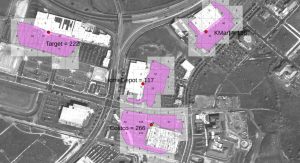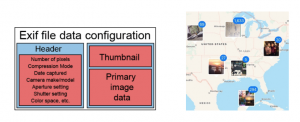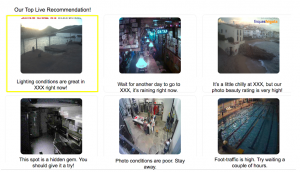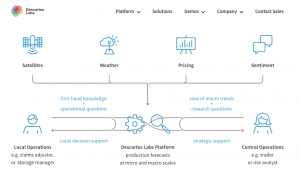Opportunity
As of 2017, indoor rock climbing in the US was a $402.9MM industry by revenue, with an annual growth rate of 3.9%. This is an industry that sees growth with the growth of disposable income, and sees its growth driven primarily by younger consumers. Consumers age 35 and below comprise 83.6% of the market, with 47% of the market aged 25 to 34.
Despite this growth, safety concerns often dissuade new climbers. Additionally, high costs in the form of the climbing gym needing liability insurance and knowledgeable staff to train and keep an eye on the climbers, increases the barriers to entry in the market.
Further, to keep climbers continuously engaged, climbing gyms employ route setters – people who redesign the patterns of the climbing holds every few weeks. To communicate the level of difficulty of a route, routes are graded. While most indoor gyms are two standard grading scales – V Scale and Font Scale – grading is very subjective and there can be a high level of variance of how routes are graded across gyms. Further, individual attributes of the climber – such as height and weight distribution (men and women for instance, may have different weight distributions which will cause them to approach a climb differently) can make routes more difficult for some people than others. While there are six main forms of rock climbing holds, there can be a high level of variation on the main forms.
Solution
We believe an algorithm can be developed, factoring in types of holds, height and pitch of the climb, attributes of the climber, such as height and weight, to create new rock climbing routes with personalized ratings. Using artificial judgment in this way will create a more objective standard of route rating that will allow climbers to practice safely. Gyms across the country could then communicate a standardized definition of route difficulty, accessing a database of infinite climbing routes. We shall imbed the algorithm into a mobile app we named PocketClimber, both after the name of a rock climbing hold (Pocket) and the ease of using the app for setting new climbing routes.
Our solution reduces the time and cost for route setting. It will reduce the dead time between climbers as well as likelihood of injuries due to route-setting judgement error. Additionally, having routes analyzed by computers according to a person’s fitness and physical characteristics (such as height and weight) may make people feel more safe, thereby attracting new people to the sport.
Commercial value and promise
Our solution targets a rapidly growing international market and is scalable, as it can be used by individual climbers as well as large gym chains, such as Gold Gyms. PocketClimber can establish the standard for climbing and be adopted by all accredited gyms. We will design a prototype app to demonstrate the potential capabilities of the PocketClimber, pitching it to investors such as GoPro founder Nick Woodman who have a vested interest in adventure and sports. Live demonstrations will prove the viability of our product. Currently, no customized solution exists in the market. The closest is the app Vertical Life, which provides standard guides to climbing.
Pilot
We will start our pilot program with the demonstration of a prototype app to climbing gyms across Chicago and get feedback from climbers from our network and from the gyms. Additionally, we plan on hosting events around the app – such as human vs AI setters, and different climbing competitions sparking an interest in the app and in the concept. Climbers may be intrigued by the unusual routes designed by AI, so there could be an event-based opportunity here. After we collect enough data, both from the human setters and the climbers we will be able to refine our algorithm and demonstrate to investors the advantages of using PocketClimber with optimized routes and less accidents for beginner climbers.
Additional:
Features:
- Wall scanner, some features of a climbing wall are not changeable. The app uses the phone camera to assess inherent difficulty of the wall
- Hold Inventory: Route setters can input the types of holds they have and how many holds
- RouteBuilder: You can specify the level of difficulty you want, and RouteBuilder will make a route for you. Additionally, could provide further insight such as range of difficulty climbers will face, so that routesetters are taking diverse body types into account when setting
- RouteFinder: On the other side of the market, consumers could use the app as well to input personal metrics such as height in order to get personalized gym and route recommendations
Sources:














